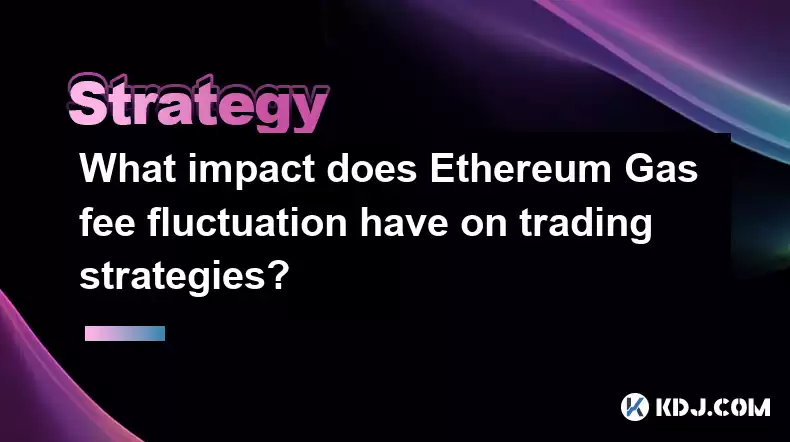-
 Bitcoin
Bitcoin $119300
2.40% -
 Ethereum
Ethereum $4254
-0.20% -
 XRP
XRP $3.184
-1.38% -
 Tether USDt
Tether USDt $1.000
0.00% -
 BNB
BNB $803.9
0.58% -
 Solana
Solana $183.1
1.50% -
 USDC
USDC $0.0000
0.01% -
 Dogecoin
Dogecoin $0.2339
-2.87% -
 TRON
TRON $0.3384
0.88% -
 Cardano
Cardano $0.8018
-0.29% -
 Hyperliquid
Hyperliquid $45.13
3.14% -
 Chainlink
Chainlink $22.10
0.96% -
 Stellar
Stellar $0.4439
-0.94% -
 Sui
Sui $3.875
-0.73% -
 Bitcoin Cash
Bitcoin Cash $570.7
0.24% -
 Hedera
Hedera $0.2589
-2.90% -
 Ethena USDe
Ethena USDe $1.001
-0.01% -
 Avalanche
Avalanche $23.83
-1.73% -
 Litecoin
Litecoin $123.8
2.61% -
 Toncoin
Toncoin $3.351
-1.13% -
 UNUS SED LEO
UNUS SED LEO $9.103
1.13% -
 Shiba Inu
Shiba Inu $0.00001356
-1.40% -
 Uniswap
Uniswap $10.93
-0.19% -
 Polkadot
Polkadot $4.057
-1.97% -
 Dai
Dai $1.000
0.01% -
 Cronos
Cronos $0.1646
4.66% -
 Ethena
Ethena $0.7974
8.11% -
 Pepe
Pepe $0.00001208
-2.89% -
 Bitget Token
Bitget Token $4.445
-1.70% -
 Monero
Monero $268.8
-2.00%
What impact does Ethereum Gas fee fluctuation have on trading strategies?
Ethereum gas fees fluctuate based on network congestion, transaction complexity, and time of day, impacting trading strategies by delaying trades, increasing costs, and potentially discouraging trading activity.
Feb 25, 2025 at 06:36 am

Key Points:
- Understand the concept of Ethereum gas fees and their impact on trading strategies.
- Explore the factors influencing gas fee fluctuations and their implications for traders.
- Identify strategies to mitigate the impact of high gas fees on trading.
Understanding Ethereum Gas Fees
Ethereum gas fees represent the transaction costs associated with executing operations on the Ethereum blockchain. These fees are paid to miners who validate and process transactions, incentivizing them to maintain the network's security. Gas fees are denominated in units called gwei, with 1 gwei equal to 0.000000001 ETH.
The amount of gas required to perform a particular action on Ethereum varies based on the complexity of the transaction. For example, simple token transfers require less gas than smart contract interactions. Additionally, network congestion during peak usage times can result in higher gas fees as users compete for block space.
Factors Influencing Gas Fee Fluctuations
Gas fee fluctuations on Ethereum are primarily driven by the following factors:
- Network Congestion: When the Ethereum network is heavily congested, the demand for block space increases, leading to higher gas fees. This occurs during periods of high trading activity or the launch of popular decentralized applications (dApps).
- Transaction Complexity: The complexity of a transaction, such as the number of operations performed or the amount of data transferred, can also impact gas fees. Smart contract interactions typically require more gas than basic token transfers.
- Time of Day and Week: Gas fees tend to be higher during peak usage times, such as weekday afternoons and evenings. This is because more users are concurrently making transactions, increasing congestion.
- Fees Set by Users: Users have the option to set a gas price for their transactions. Higher gas prices increase the likelihood that a transaction will be processed quickly, but also result in higher costs.
Impact on Trading Strategies
Gas fee fluctuations can significantly impact trading strategies on Ethereum.
- Delayed Trades: High gas fees can cause delays in executing trades, as users may be hesitant to pay excessive fees. This can result in missed trading opportunities or slippage in prices.
- Increased Costs: Traders need to factor in gas fees when determining their trading strategy, as high fees can reduce profits or even lead to losses.
- Reduced Trading Volume: Extreme gas fee increases can discourage trading activity, as traders are less likely to engage in frequent transactions due to high costs.
Strategies to Mitigate High Gas Fees
Several strategies can be used to mitigate the impact of high gas fees on trading:
- Wait for Lower Gas Fees: Monitor gas fee fluctuations and wait for periods of low congestion to execute trades. This may require some patience, but can significantly reduce transaction costs.
- Use Layer-2 Scaling Solutions: Layer-2 scaling solutions, such as Polygon, offer faster and cheaper transactions by processing them off-chain before settling them on the main Ethereum network.
- Consider Alternative Blockchains: Explore alternative blockchains with lower transaction fees, such as Binance Smart Chain or Polygon Matic, for certain trading activities.
- Batch Transactions: Combine multiple transactions into a single batch to minimize the total gas fees incurred.
- Set Realistic Gas Prices: Avoid setting excessively high gas prices, as there is no guarantee that transactions will be processed faster. Optimize gas prices to balance speed and cost.
FAQs
Q: Can gas fees be eliminated entirely?
A: No, gas fees are an intrinsic part of the Ethereum network and cannot be completely eliminated. They incentivize miners to maintain the network's security and ensure the timely processing of transactions.
Q: How can I estimate gas fees before executing a trade?
A: Several online tools and services provide real-time estimates of gas fees. Popular options include Eth Gas Station, Gas Now, and⛽️ Ethereum Gas Price Tracker.
Q: Is there a limit to how many transactions can be batched together?
A: Yes, there is a maximum block size on the Ethereum network that limits the number of transactions that can be included in a single batch. This limit is typically around 150 transactions.
Q: What other factors besides network congestion can affect gas fees?
A: In addition to network congestion, factors such as transaction size, token contract code complexity, and smart contract execution costs can influence gas fees.
Q: Can Layer-2 scaling solutions completely replace the need for Ethereum?
A: No, Layer-2 solutions are designed to complement the Ethereum ecosystem, not replace it. They offer faster and cheaper transactions for certain use cases, but still rely on the Ethereum network for security and settlement of transactions.
Disclaimer:info@kdj.com
The information provided is not trading advice. kdj.com does not assume any responsibility for any investments made based on the information provided in this article. Cryptocurrencies are highly volatile and it is highly recommended that you invest with caution after thorough research!
If you believe that the content used on this website infringes your copyright, please contact us immediately (info@kdj.com) and we will delete it promptly.
- KiwiSavers, Crypto Returns, and Digital Investment: Are Kiwis Missing Out?
- 2025-08-11 06:30:11
- Ruvi AI's Sales Surge: Could It Outpace Tron in the Crypto Race?
- 2025-08-11 06:30:11
- Meme Coin Mania: Is Shiba Inu Out and Little Pepe In?
- 2025-08-11 06:50:12
- Bitcoin Casino Weekly Challenge: Hitting the Jackpot in Crypto Gaming
- 2025-08-11 06:50:12
- Cardano (ADA): Riding the Bull Cycle Wave to New Heights?
- 2025-08-11 07:10:12
- Bitcoin Institutional Holdings in 2025: A Bullish Outlook
- 2025-08-11 07:15:19
Related knowledge

How to use stop-loss orders to limit potential losses?
Aug 08,2025 at 02:01pm
Understanding Stop-Loss Orders in Cryptocurrency TradingA stop-loss order is a risk management tool used by traders to automatically sell a cryptocurr...

What are the most promising altcoins to invest in?
Aug 10,2025 at 11:42am
Understanding the Role of Private Keys in Cryptocurrency WalletsIn the world of cryptocurrency, private keys are the cornerstone of ownership and cont...

How to read cryptocurrency charts and use technical analysis?
Aug 08,2025 at 11:08am
Understanding the Basics of Cryptocurrency ChartsCryptocurrency charts are graphical representations of price movements over time. These charts are es...

What is the difference between long-term holding (HODLing) and short-term trading?
Aug 10,2025 at 05:30pm
Understanding HODLing in the Cryptocurrency SpaceThe term HODL originated from a typo in a 2013 Bitcoin forum post and has since become a widely accep...

How to do your own research (DYOR) before investing in a crypto project?
Aug 08,2025 at 09:07pm
Understanding the Core Principles of DYOR in CryptocurrencyEngaging in due diligence before investing in any cryptocurrency project is essential to mi...

How to build a diversified crypto portfolio?
Aug 09,2025 at 12:21pm
Understanding the Importance of Diversification in CryptoDiversification in the cryptocurrency space is a strategy used to reduce risk by spreading in...

How to use stop-loss orders to limit potential losses?
Aug 08,2025 at 02:01pm
Understanding Stop-Loss Orders in Cryptocurrency TradingA stop-loss order is a risk management tool used by traders to automatically sell a cryptocurr...

What are the most promising altcoins to invest in?
Aug 10,2025 at 11:42am
Understanding the Role of Private Keys in Cryptocurrency WalletsIn the world of cryptocurrency, private keys are the cornerstone of ownership and cont...

How to read cryptocurrency charts and use technical analysis?
Aug 08,2025 at 11:08am
Understanding the Basics of Cryptocurrency ChartsCryptocurrency charts are graphical representations of price movements over time. These charts are es...

What is the difference between long-term holding (HODLing) and short-term trading?
Aug 10,2025 at 05:30pm
Understanding HODLing in the Cryptocurrency SpaceThe term HODL originated from a typo in a 2013 Bitcoin forum post and has since become a widely accep...

How to do your own research (DYOR) before investing in a crypto project?
Aug 08,2025 at 09:07pm
Understanding the Core Principles of DYOR in CryptocurrencyEngaging in due diligence before investing in any cryptocurrency project is essential to mi...

How to build a diversified crypto portfolio?
Aug 09,2025 at 12:21pm
Understanding the Importance of Diversification in CryptoDiversification in the cryptocurrency space is a strategy used to reduce risk by spreading in...
See all articles

























































































